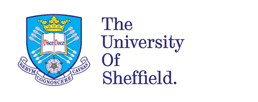
Jim Chilcott, Chris McCabe, Paul Tappenden, Anthony O'Hagan, Nicola J Cooper, Keith Abrams, Karl Claxton
Universities of Sheffield, Leicester and York
Publication details: British Medical Journal 326, 522-526, 2003.
Objective: To evaluate the cost effectiveness of four disease modifying treatments (interferon betas and glatiramer acetate) for relapsing remitting and secondary progressive multiple sclerosis in the United Kingdom.
Design: Modelling cost effectiveness.
Setting: UK NHS.
Participants: Patients with relapsing remitting multiple sclerosis and secondary progressive multiple sclerosis.
Main outcome measures: Cost per quality adjusted life year gained.
Results: The base case cost per quality adjusted life year gained by using any of the four treatments ranged from £42,000 ($66,469) to £98,000 based on efficacy information in the public domain. Uncertainty analysis suggests that the probability of any of these treatments having a cost effectiveness better than £20,000 at 20 years is below 20%. The key determinants of cost effectiveness were the time horizon, the progression of patients after stopping treatment, differential discount rates, and the price of the treatments.
Conclusions: Cost effectiveness varied markedly between the interventions. Uncertainty around point estimates was substantial. This uncertainty could be reduced by conducting research on the true magnitude of the effect of these drugs, the progression of patients after stopping treatment, the costs of care, and the quality of life of the patients. Price was the key modifiable determinant of the cost effectiveness of these treatments.